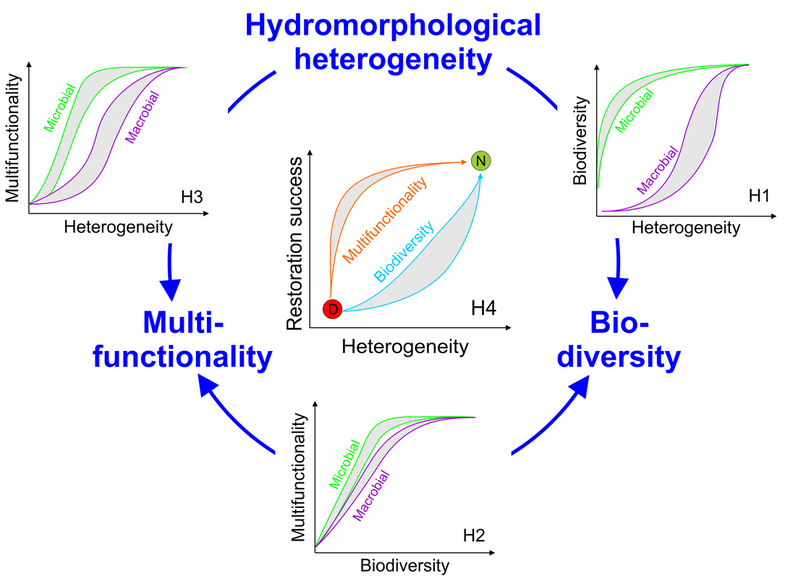Background
Humans have interfered with the natural hydromorphology of streams and rivers for centuries, altering the flow regime, channel structure, and connection to floodplains. These impacts have cumulatively reduced the hydromorphological complexity and integrity of river-floodplain ecosystems. Thereby, they contribute to the ongoing decline of freshwater biodiversity.
The management of freshwater ecosystems has addressed this problem initiating efforts to restore the hydromorphology of running waters. Such activities can include reconfigurations of the stream channel by installing boulders and wood, removing dams and weirs or building new channels, as well as riparian reforestation. The underlying assumption behind these efforts is that once the hydromorphology is restored, freshwater biodiversity and ecosystem functions will follow.
With RESTOLINK, we argue that the potential for hydromorphological restoration to improve biodiversity and function is not fully explored. Through an effort for assessing stream restoration initiatives across a latitudinal gradient (Brazil, Spain, Germany, and Sweden), we will tackle two significant shortcomings in current restoration practices:
1) There is an apparent mismatch between the spatial scales at which hydromorphology is restored and scales at which biodiversity and ecosystem functions are controlled.
2) Most indicators of restoration success are structural components of communities (e.g., diversity, abundance) and a restoration measure is deemed successful if a particular set of species occurs at a restored site. We argue that the functional role of organisms is a crucial parameter besides their taxonomic identity and that certain ecosystem functions may already recover in a restored reach even if the species community has not yet reached the target.
The management of freshwater ecosystems has addressed this problem initiating efforts to restore the hydromorphology of running waters. Such activities can include reconfigurations of the stream channel by installing boulders and wood, removing dams and weirs or building new channels, as well as riparian reforestation. The underlying assumption behind these efforts is that once the hydromorphology is restored, freshwater biodiversity and ecosystem functions will follow.
With RESTOLINK, we argue that the potential for hydromorphological restoration to improve biodiversity and function is not fully explored. Through an effort for assessing stream restoration initiatives across a latitudinal gradient (Brazil, Spain, Germany, and Sweden), we will tackle two significant shortcomings in current restoration practices:
1) There is an apparent mismatch between the spatial scales at which hydromorphology is restored and scales at which biodiversity and ecosystem functions are controlled.
2) Most indicators of restoration success are structural components of communities (e.g., diversity, abundance) and a restoration measure is deemed successful if a particular set of species occurs at a restored site. We argue that the functional role of organisms is a crucial parameter besides their taxonomic identity and that certain ecosystem functions may already recover in a restored reach even if the species community has not yet reached the target.

